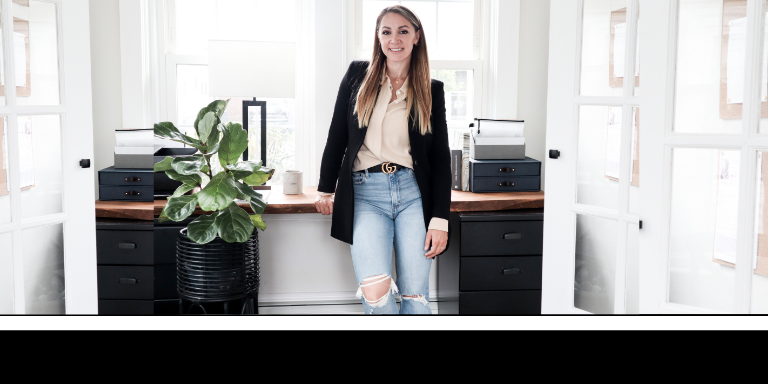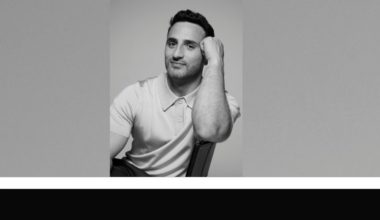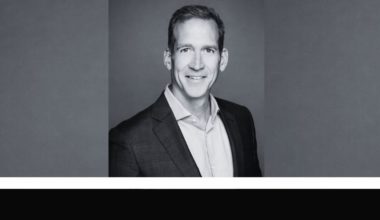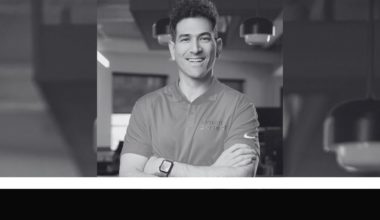Lisa Perrone Cirelli is Chief Creative Officer and Co-Founder at Stylyze, the first merchandising-as-a-service platform built exclusively for the Home and Fashion verticals. Lisa is an award-winning interior designer who graduated Magna Cum Laude with a degree in interior architecture. Her focus is to drive the brand identity through an omnichannel approach that delivers rich digital experiences.
What is Stylyze all about?
Stylyze is a MaaS (Merchandising as a Service) platform for retailers that brings the key elements of the in-store experience into the virtual and digital space. We have a merchandising and styling platform as well as a suite of products that are solutions to common retail merchandising challenges, such as consistent product attribution, visually similar products, coordinating products, and what we are best known for expertly styled complete outfits or collections called Styleboards. We are passionate about our omnichannel approach to bringing unique shopping experiences online.
Tell us a little bit about your background and how you started your company?
As an interior designer and creative person, the fact that I have made my career in tech comes as a bit of a surprise to people, myself included. It wasn’t something that I had planned; but, I couldn’t be happier that this career path in a way chose me. I was ready to scale my skills as a designer and look for opportunities to do so with a completely open mind and when it comes to scale and reach technology this is the path forward.
I graduated Magna Cum Laude with a bachelor’s of science from Arizona State’s well-recognized interior architecture program where my enthusiasm to dive full time into my hospitality firm was quickly met with an economic downturn that crippled the construction industry. I decided to leave the Phoenix area to pursue a career in a bigger economic market, a leap of faith that brought me to Seattle. Seattle’s commercial and hospitality design business was better at the time than Phoenix, but firms were not looking to hire and rather were trying to hold on to the employees they had and avoid layoffs. I was ultimately offered an opportunity to work at a high-end residential furniture showroom, solely on commission, where I needed to sell furniture and accessories that many times were in catalogs that my clients could not tangibly experience. I fell back on what I knew, designing through storytelling, and focused on that rather than up-selling my clients on our most expensive leather sectional.
Most clients were already frustrated by the difficulty to find what they liked online. They couldn’t shop in a contextual way that showed them what pieces coordinated and which would work well for them. My approach was different from a typical sales associate. I used Photoshop and slide decks on my personal laptop to put together whole design concepts that were heavily influenced by my client’s lifestyle, color, and style preferences. I called these Styleboards. I wasn’t selling a product but rather a whole vision, a complete story that a family could imagine bringing into their home. I quickly became a top-earning associate month after month. My question now was, why wasn’t there a better way to shop online, contextually through design stories like these to find home decor items?
Meeting my business partner, Kristen Miller, changed how I would try to solve this problem and it was an approach that her background in design, as well as entrepreneurship, would serve us in building a MaaS platform that allows consumers to discover products through digital merchandising experiences. By scaling the design process, building a platform for merchandising, and creating omnichannel shopping experiences, I am now able to bring beautiful design into the homes and closets of hundreds of thousands of consumers rather than just on a one-to-one basis through a studio or firm.
What was the biggest problem you encountered with your business and how did you overcome it?
One of the most difficult problems was being ahead of our time. We started Stylyze before there was a recession or pandemic when business as usual for retailers was “good enough”. There was no sense of urgency or immediate need to make changes to what seemed to be working. What was working were grid-like views of products found through a bread crumb or drop-down menu, where eventually you might find the item you were looking for, or perhaps you would stumble upon something else entirely different that you purchased in the process. We knew there was a better way to sell products because it was happening in-store with stylists cross-selling between departments and being able to tell a story around how all the pieces came together.
Bringing a styled merchandising shopping experience to their online presence meant retailers needed better data and new front-end UI, solutions that we had readily available but we needed to prove their customer also wanted a new way to shop. It was hard at first to get buy-in around the fact that selling this way needed to take place both in-store and online and that their customer was changing; but, once social media and younger consumers entered the market purchasing more impulsively and around influencer-driven recommendations we hit a turning point. Some retailers were ahead while others needed to play catch up, but there was finally no denying that retail and e-commerce were changing for the long term. It finally felt like our voices were being heard.
What were the top mistakes you made starting your business and what did you learn from it?
A couple of the top mistakes that we made when starting out were:
Falling in love with your product. It’s really easy as a passionate, invested entrepreneur to fall in love with what you have built. We would find ourselves commonly talking through all the features and bells and whistles of our product and then when our meeting time was up we missed listening to what the needs of our potential clients were. We missed the opportunity to listen to their immediate concerns and tailor our presentation in the appropriate way. This kind of inward perspective also limits you from being able to grow and develop your product. While it is great to be passionate about what you have, you should be equally as passionate about what can be better and what the market is really telling you to build next. We were able to learn from this and ultimately build a better product that suited the needs of our partners.
Always saying “yes”. There is a saying amongst entrepreneurs that you need “to build and fly the airplane at the same time” and while that might be true it is easy to overpromise a delivery to your client. One of the worst things you can do is overpromise and underdeliver. As a little company just beginning to grow we never wanted to say “no” to the requests of some of our big clients. Many times we found ourselves in a position of overextending ourselves to try to meet their deadlines and expectations and, while most of the time we were able to meet the delivery economically, it wasn’t great for our business or the mental health of our team. You never want to operate consistently under strain, you need to be able to be honest and realistic about what is possible and set a price that is both fair of the effort and time your team will put in to get the job done right. Our team runs extremely efficiently and our clients always know what to expect and what they can expect is on-time, above and beyond delivery.
What is one thing that you do daily to grow as an entrepreneur?
I consider myself a perpetual student so I am always reading thoughtful insights from the brightest minds in the industry whether that be via their books, latest LinkedIn posts, or article contributions and trying to apply them to my own life and business. I try to give myself a minimum of 30 minutes a day to devote to listening to their perspectives on what is currently happening in the world, in business, or ideas that they are known for.
A few current examples of this are reading the book “Principles” by Ray Dalio and understanding how his assessment of repeatable actions can be identified and used to help you set and meet your own goals, reading through the top comments on LinkedIn from entrepreneurs I enjoy following like Marc Lore who commonly translates his real-life experiences into palpable business-related actions and listening to the podcasts like Tim Ferris who interviews about the habits of high performing individuals and figuring out how to adapt them to my own life.
It excites me to learn something new and try to make it a habit. I believe these small, mindful changes in our thinking lead to larger, tangible results that gradually appear in how we live our lives, conduct our businesses and control our emotions and overall happiness.
What are three books or courses you recommend for new entrepreneurs?
- Principles by Ray Dalio
- Tribe of Mentors by Tim Ferris
- Originals by Adam Grant
What was your first business idea and what did you do with it?
My first business idea and venture was my own interior design firm, where I managed client projects while starting my second business alongside my business partner, Kristen Miller, which was scaling the former idea into Stylyze. Both were underway when I was 25 years old and 10 years later, I am still here building out a dream to bring beautiful design into the homes and closets of everyone. Even in the early years, I never doubted we would be the ones to bring curated design to scale, a task now looking back was a huge undertaking full of complexity, but not impossible. As Marc Lore says “VCP-Vision, Capital, People” are essential and anything is possible.
What are you learning now? Why is that important?
I am learning about scaling a business, hiring a team, and properly managing and setting expectations. It is almost easier as an entrepreneur when you keep everything on your plate, hold yourself to your own standard and are solely responsible for the results, but that all changes when the business scales up and a team of people are added to support the actions that you were previously responsible for. Communication, setting clear goals and hiring people with integrity are just a few of the skills I am working on regularly. I want to know that my team can work independently of me and giving them space to come up with their own practices and methods as well as contribute to the innovation of our products and services is essential for making the overall business better. Not only does the business benefit from great ideas, but our team members feel included in important decisions and conversations.
What is the one thing you wish you knew before starting your business?
It’s going to take longer than you think. When we hear about companies like AirB&B, Uber, Pinterest and Instagram we think of them appearing overnight with a working product and a huge user base and it just doesn’t happen that way in the startup world. I knew it would take a while to establish our company, but I didn’t know just how long it would be until we could say “we made it”. Thankfully surrounding ourselves with a fantastic team, great investors and advisors who had lived this path before kept us grounded and focused on what we could control that was in front of us each day. Small steps forward, add up a lot of covered ground.
What has been your most effective marketing strategy to grow your business?
Since Stylyze is a B2B business our marketing strategy has been focused on building excellent customer-facing products and tools that lead back to our business. Many times people do not know that Stylyze is the magic behind what consumer experiences on the front-end, so we do our best to build the best experiences possible and then find the company’s stakeholders that are responsible for that part of their business to share it with.
We typically sell to large enterprises so building strong relationships with industry leaders and working through strategic introductions has been a critical component of our success.
If you only had $1000 dollars to start a new startup, knowing everything you know now, how would you spend it?
If I only had $1000 dollars for a new startup I would spend it on building something that people could experience. Starting a business, getting funding, and then selling your product revolves around storytelling. If you can give an investor or a prospective client a way to experience what your business is going to be or offer, and provide a great story around it, you will have made a great investment. This experience could be something as simple as a visual of how the product looks or a demo of the technology that works. Being able to share the excitement and passion an entrepreneur conveys through experiencing their product or service will pay off in dividends.
What’s your best piece of advice for aspiring and new entrepreneurs?
If it doesn’t bring you joy, don’t do it. If I wasn’t extremely passionate about what I set out to do as a founder, I would have never lasted on the rollercoaster. The truth is, this work and this mission bring me joy and it’s something I am proud of every day, even on the bad days.
What’s a productivity tip you swear by?
I love Microsoft OneNote. It’s like a digital Trapper Keeper (did I just date myself?). I can manage my daily objectives as well as all my meeting notes that are searchable. It’s great for organizing my personal and professional notes and keeps them separate but in one place.
What is your favorite quote?
“Be thankful for what you have. Be fearless for what you want.”
– Anonymous
How can readers get in touch with you?
I love connecting with like-minded people on LinkedIn. I can be found at Lisa Perrone Cirelli. It’s a great place to share what’s inspiring you and follow people I look up to. I love keeping up with people’s career moves, projects they are working on, achievements they have accomplished, and even small things like favorite quotes or books.
Tech Founder: Elizabeth Dodson: Stop Waiting, Start Doing








